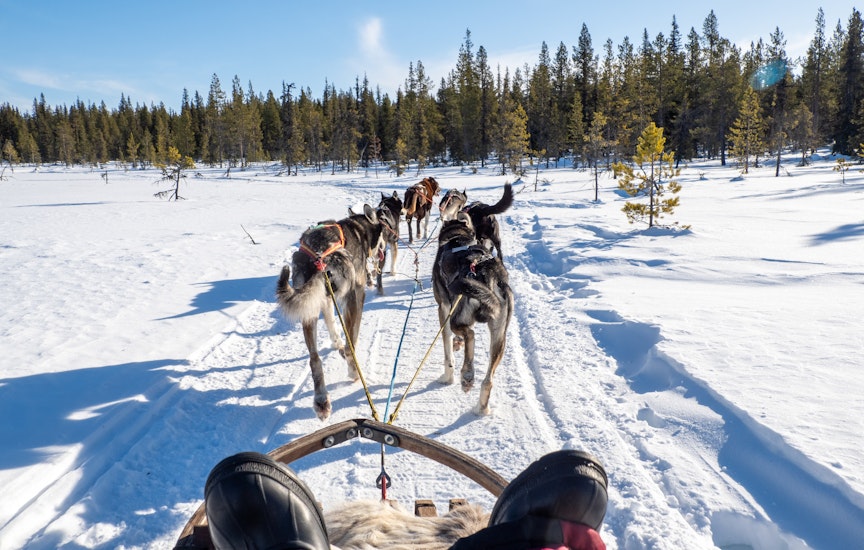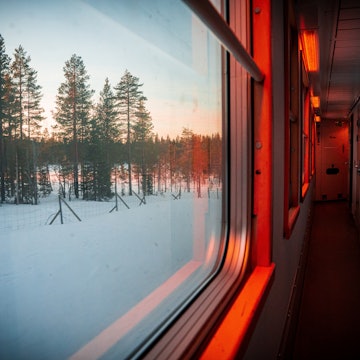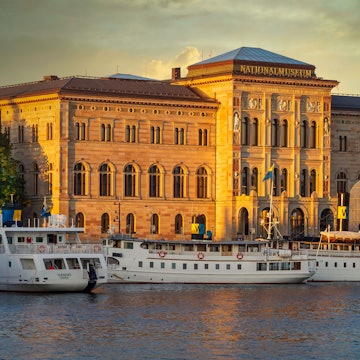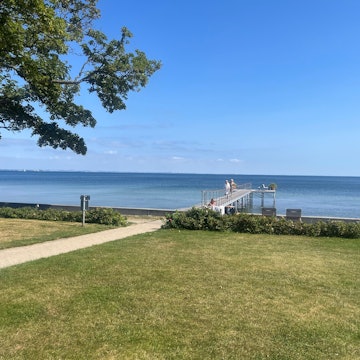
The best times to visit Sweden, from Midsummer sun to winter fun

Feb 18, 2022 • 7 min read
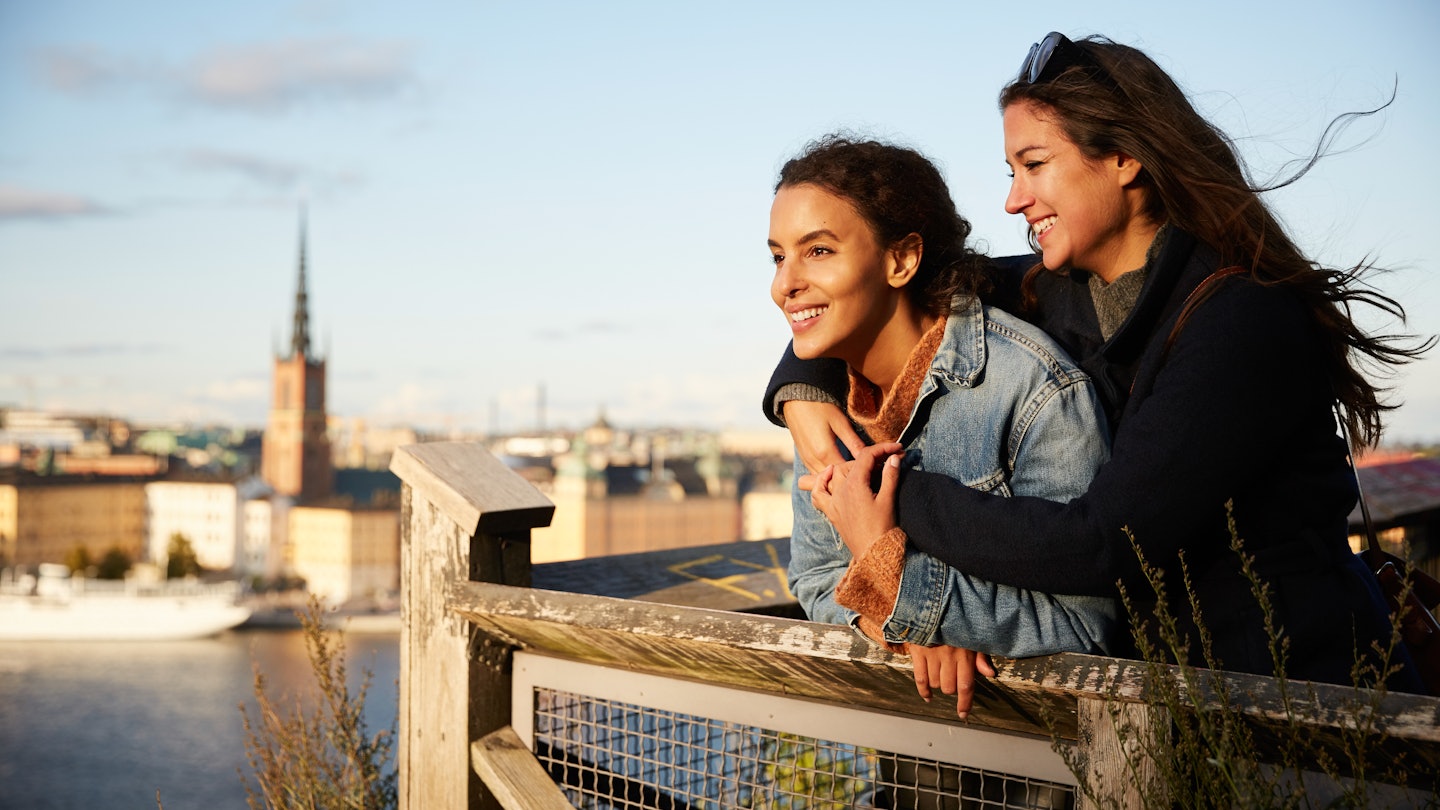
The Swedish capital is as romantic in summer as it is in winter © Getty Images / Maskot
With the northerly latitude, the distinctive seasons in Sweden are defined by the abundance or absence of daylight. In summer, the days seem to last forever, with the sun never setting for a month or more north of the Arctic Circle.
The flip side, of course, is that daylight is in short supply around the winter solstice, with the sun never rising above the horizon for several weeks in the far north of the country. Winter brings its own beauty, however, including snow-covered landscapes, brilliant starry skies and spectacular aurora borealis displays in the snowy expanses of Lappland.
Then there's Sweden's busy festival calendar, with some of the most uplifting events reserved for deep winter and Midsummer. Be aware, however, that many seasonal businesses schedule their opening hours around the Swedish vacation seasons; to avoid disappointment, double-check things are open before you book a trip out of season.
Here's our guide to the best times to come to Sweden for midnight sun, northern lights shows and more.
Low Season (mid-October – mid-April) is the best time for winter activities and seeing the northern lights
An evening under the northern lights is the single best reason to visit Sweden in winter. The chance of a nighttime show from the aurora borealis peaks in the north of the country between November and March. To fully immerse yourself in the season, the famous Icehotel in Jukkasjärvi is open from December to April.
Elsewhere, many hotels fill with business travelers, meaning you won’t necessarily find great deals on accommodations despite the cold weather and short daylight hours. Nevertheless, this is a good time for skiing (both downhill and cross-country), and cozy activities such as saunas and curling up by log fires.
Come in the shoulder Season (mid-April–May & September–mid-October) for manageable prices and more daylight
Around April, Sweden begins to shake off the winter cold and gloom and nature reawakens. May is often a glorious month, with long days, lush greenery, blooming wildflowers and comfortable temperatures. You'll miss out on the midnight sun, but with nighttime darkness, you'll sleep more easily.
September is also a pleasant month, with moderate weather and lovely fall colors. By October, fall is in full swing, and northern Sweden will likely have received its first snows. The shoulder season is often the best time to find hotel deals, as seasonal businesses are open but not yet busy.
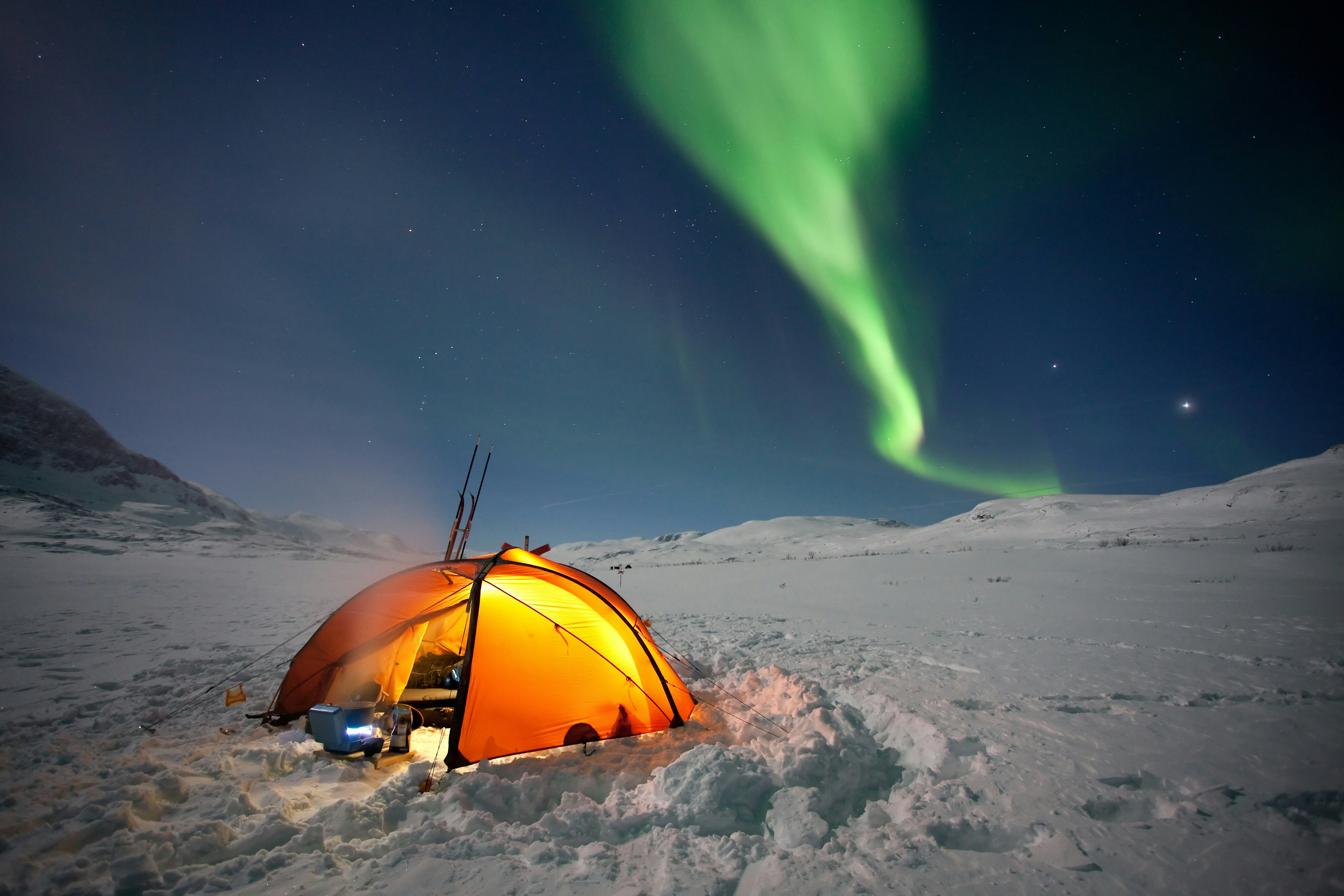
High Season (June–August) is the best time for long days, midnight sun and seasonal attractions
Sweden is at its most vibrant in summer. The Swedish people and the natural world both flourish thanks to long daylight hours and pleasantly warm temperatures. This is a time for lake swimming, hiking, cycling and other kinds of fresh-air fun.
Midsummer – around the summer solstice – marks the start of the national summer holidays, when many Swedes take five or six weeks off work. Prices peak, and you'll need to book ahead in popular vacation destinations such as Gotland, Öland and the Stockholm Archipelago.
January is the time for cheap skiing
January can feel a bit gloomy after the holiday season festivities, with short, cold and often cloudy days. Still, the gradual return of the sun after the polar night brings a welcome spirit of reawakening, especially in the far north. Another bonus: January is often one of the cheaper months at Swedish ski resorts.
Key events: Kiruna Snow Festival, Göteborg Film Festival
February brings Lent treats and family time
Though still chilly, February tends to be a bit sunnier than January, with days growing noticeably longer. Swedish schools have a winter break mid-month when ski resorts such as Åre, Sälen and Vemdalen fill up with families. With the arrival of Lent, semlor – traditional cardamom-flavored wheat buns filled with whipped cream and almond paste – appear in bakeries.
Key events: Jokkmokk Market
March is the peak season for cross-country skiing
March typically brings relatively dry weather, warmer temperatures and quite a bit of sunshine. but with snow still deep in the northern forests, this is a good time for winter recreation. On the first Sunday in March, cross-country skiers (and spectators) flock to Dalarna for the 90km (56mi) Vasaloppet race. As spring gets underway in southern Sweden, birdwatchers grab binoculars and head outside to spot returning migratory species.
Key events: Vasaloppet, GBG Beer Week (Göteborg)
April sees warmer days and festival fun
April is a time of contrasts, with big temperature shifts from day to night as the chill of winter gradually recedes and bright days bring new energy and signs of spring. At Hornborgasjön (Lake Hornborga) in Västergötland, Eurasian cranes gather in large numbers and can be seen performing mating dances before continuing north. In Stockholm, Kungsträdgården park turns pink with Japanese cherry blossoms. The month of April ends with bonfires and songs of spring to celebrate Valborgmässoafton (Walpurgis Eve).
Key events: Kulturnatt Stockholm
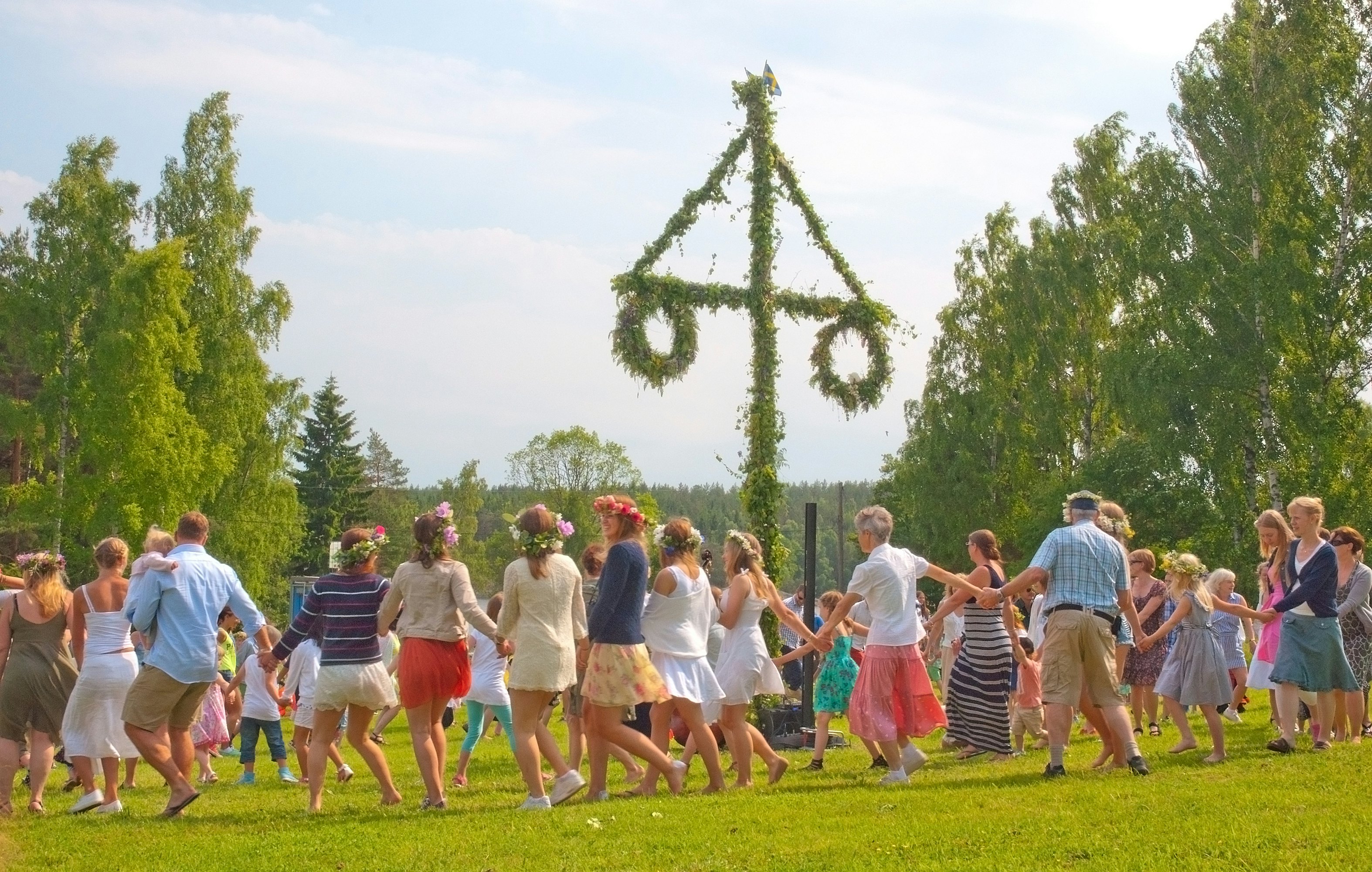
May is full of the optimism of spring
By early May, spring is typically well underway, with pleasantly warm temperatures in most of Sweden, though the thermometer may still hover around freezing in the far north. The days are long, the nights are short, and the country is full of life after the long winter.
Key events: International Workers Day parades
June brings the midnight sun and Midsummer parties
June is the sunniest month of the year, with very long days and short nights. In the far north, you can see the sun 24 hours a day, and alpine wildflowers bloom, adding bursts of color to the heaths, moors and hillsides. In southern Sweden, flowering rapeseed turns the countryside into a patchwork of bright green and yellow. With the summer solstice comes Midsummer, one of the most important celebrations of the Swedish calendar, second only to Christmas. It's marked by dancing around leaf-clad poles and herring feasts.
Key events: Sweden Rock Festival (Sölvesborg), Stockholm Marathon, Swedish National Day (6 June), Midsummer, Lollapalooza (Stockholm), Smaka Good Food Festival, Bergman Week (Fårö)
July is the peak holiday season for summer sun
July is typically the warmest month of the year, with Swedes on holiday flocking to beaches, archipelagos and other summer playgrounds. In the north, alpine flowers are at their most abundant, but so are the mosquitos; hikers will find fewer insect irritants later in the summer.
Key events: Gotland Runt yacht race, Åre Bike Festival, Bauhaus-galan (track and field), Gotland Chamber Music Festival, Uppsala Reggae Festival
August welcomes in the crayfish season
As Swedes return to work and school, days grow noticeably shorter and temperatures dip, though water temperatures are typically at their warmest. There’s still time for some more dips in lakes and the sea before the fall arrives. Mountainous regions in northern Sweden typically receive their first snowfall around this time. August is also the time for kräftskivor – joyful crayfish parties where Swedes gather to devour the seasonal seafood bounty, sip schnapps and sing drinking songs.
Key events: Malmöfestivalen, Medieval Week (Gotland), Stockholm Pride, Göteborg Culture Festival

September is the best time for fall colors
September can be a spectacular month for hiking in northern Sweden, as the mosquitos disappear and the tundra turns brilliant shades of orange and red. In fact, comfortable temperatures and fewer tourists make September a great time to visit cities and natural areas throughout Sweden.
Key events: Stockholm Fringe Festival, Lidingöloppet, Kivik Apple Market
October marks the shift from fall to winter
October can be beautiful in southern Sweden for as long as the fall leaves remain on trees. But once the leaves fall, winter begins to knock on the door. With weakening sunlight and shorter, colder days, morning fog becomes more common and unstable weather can put a dampener on outdoor activities.
Key events: Stockholm Jazz Festival
November is the start of the northern ski season
By November, winter has arrived in most parts of Sweden, with substantial snowfall in the north, allowing ski resorts to open in the mountains. Further south, November can be one of the year’s dreariest months, as there’s typically not much snow to brighten the dark days. Later in the month, Christmas markets get underway, adding a welcome splash of light and warmth to the season.
Key events: Autumn Lights at Sofiero Palace, Stockholm International Film Festival, Gotland Truffle Festival, Christmas markets open
December brings Christmas cheer
Despite very short days and frosty temperatures, December is a festive month, with twinkling holiday lights, Advent stars in windows and St Lucia Day celebrations on the 13th of the month. Christmas markets are busy, and in Stockholm, artistic light displays illuminate the city during Nobel Week. The lead-up to Christmas is also a good time to sample the traditional Swedish holiday buffets known as julbord. In Arctic Jukkasjärvi, the annually rebuilt Icehotel opens for the season, and there's a good chance of seeing the northern lights.
Key events: Christmas markets continue, Nobel Prize Day (10 December), Nobel Week Lights, St Lucia Day (13 December), New Year’s Eve
You may also like:
How to experience Sweden’s cross-country skiing tradition: the best resorts and ski tracks
Sweden's most beautiful beaches: from sunbathing near the Arctic Circle to lakeside lounging
9 of the best road trips in Sweden: take a chance on these





